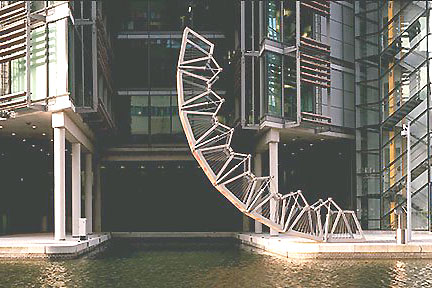Two recent encounters with owls made me reach for this particular book. One early morning, after heavy snowfall, I was making my way to the station when a tawny owl swooped silently over my shoulder leaving me staring in wonder in its wake.
 The second encounter was more up close and personal thanks to a raptor rescue centre who were showing off some of their birds in town. I always feel slightly uneasy about such displays of what I understand to be shy birds, and resisted the offer to stroke them (tempting tho' that was). I did however take some photos with my phone. The faces are so captivating, as Desmond Morris says, there is something special about the flat-faced owl and those huge forward-facing eyes which make us believe we are looking into the face of almost humanoid intelligence.
The second encounter was more up close and personal thanks to a raptor rescue centre who were showing off some of their birds in town. I always feel slightly uneasy about such displays of what I understand to be shy birds, and resisted the offer to stroke them (tempting tho' that was). I did however take some photos with my phone. The faces are so captivating, as Desmond Morris says, there is something special about the flat-faced owl and those huge forward-facing eyes which make us believe we are looking into the face of almost humanoid intelligence.
Owls are everywhere in art and literature from the 30,000 year-old cave engraving at Chauvet to Harry Potter's Hedwig - we know them so well and yet hardly ever encounter them. It's probably this paradox which has resulted in the ambivalent attitude we humans have shown these mysterious birds over the years. The owl's (mostly) nocturnal habit has given rise to contradictary
feelings about it. They have been viewed as bringers of luck and on the other hand, evil omens of death. The kindly wise bird or witches' familar; vehicle for a goddess; symbol of obstinacy, symbol of calm.
 Morris takes us on a whistlestop tour through owl mythology, symbolism, owls in art and literature, and then finishes with some natural history of the owl. He tells us that owls mate for life, that despite folklore to the contrary they can see in bright light. They have the best stereoscopic vision of all birds and their hearing is about 10 x better than a human's and they are adapted to live in almost every climate. Although we like to think of the owl as a wise old bird, infact as a
specialist it is not nearly as intelligent as the opportunist parrot or
crow. But wise old parrot doesn't quite have the same ring does it? My favourite picture in the book is of an elf owl nesting inside a cactus. Elf owl
Morris takes us on a whistlestop tour through owl mythology, symbolism, owls in art and literature, and then finishes with some natural history of the owl. He tells us that owls mate for life, that despite folklore to the contrary they can see in bright light. They have the best stereoscopic vision of all birds and their hearing is about 10 x better than a human's and they are adapted to live in almost every climate. Although we like to think of the owl as a wise old bird, infact as a
specialist it is not nearly as intelligent as the opportunist parrot or
crow. But wise old parrot doesn't quite have the same ring does it? My favourite picture in the book is of an elf owl nesting inside a cactus. Elf owlThe nice thing about today's technology is that you can be sat reading a book and think, 'I want to see that', and in seconds you can be watching a video. The same applies for this blog, so here's a link to footage of some gorgeous Snowy Owls that have adapted to daytime hunting.
The BBC currently have an ad for their HD services which is simply stunning. I was delighted to find it on YouTube to share with you. It shows high definition slow motion footage of a majestic Great Grey Owl flying towards the camera. This was taken from David Attenborough's Frozen Planet series and just underlines how adaptable the owl is. The following link explains how the owl uses its flat face and feathers as a kind of sonar dish to find its prey. A warning for the faint-hearted amongst you, it doesn't end well for the rodent but hey, an owl's gotta eat too! Great grey owl footage
This is so my kind of book. It straddles art, folklore and natural history, is generously illustrated throughout and left me knowing just a little bit more than I did before about these beautiful birds.
Owl by Desmond Morris (2009) Owl
Owl, is just one in this series of books. Others in the series that are already sitting on my wishlist are: Wolf and Fox but if you go to the link, you will see there are many others in the series to suit all tastes.. hare, chicken, sparrow... And they've now added trees to the list! Dangerous....
Other books on my bookshelf
 The tale of one woman's associations with the real smart birds. Corvus: A life with birds by Esther Woolfson Corvus
The tale of one woman's associations with the real smart birds. Corvus: A life with birds by Esther Woolfson Corvus 
And for a tour round all things feathery from prehistoric fossils to Las Vegas show girls, you can't do better than Feathers: The evolution of a natural miracle (2011) by Thor Hanson Feathers






